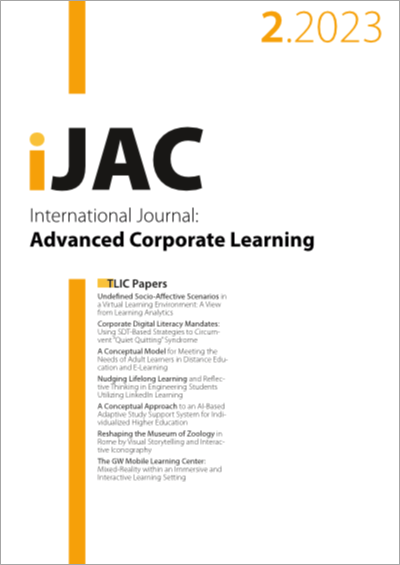Undefined Socio-Affective Scenarios in a Virtual Learning Environment
A View from Learning Analytics
DOI:
https://doi.org/10.3991/ijac.v16i2.35651Keywords:
Learning Analytics, Socio-affective Scenarios, Virtual Learning EnvironmentsAbstract
There is a growing number of virtual courses being offered by Brazilian educational institutions, requiring the development of technological resources and research to assist in the teaching and learning processes in Distance Education (DE). The analysis of the students’ socio-affective profiles in Virtual Learning Environments (VLE) enables possibilities to develop methodologies and/or resources to better understand them. The Social Map (SM) and Affective Map (AM), both features of the Cooperative Learning Network (ROODA in Portuguese), provide inferences and graphic presentations of students' socio-affective profiles. Thus, this article aims to identify students with Undefined Socio-affective Scenarios in a VLE, based on Learning Analytics (LA). LA is defined as the measurement, collection, and analysis of data. This qualitative and quantitative research approach was carried out based on 10 case studies. The target audience was divided between 77 undergraduate students, 29 graduate students, 27 elderly people, and 86 professors who participated in teaching activities at a Brazilian public university. Data collected from the SM and AM were extracted in order to identify the relationship between these two aspects. The result was 18 Socio-affective Scenarios using LA and the identification of 108 Pedagogical Strategies to contribute to the analysis of students’ learning profiles.
Downloads
Published
How to Cite
Issue
Section
License
Copyright (c) 2023 Jacqueline Mayumi Akazaki, Dra. Leticia Rocha Machado, Dra. Carla Adriana Barvinski, Dra. Cristina Alba Wildt Torrezzan , Dra. Patricia Alejandra Behar

This work is licensed under a Creative Commons Attribution 4.0 International License.



